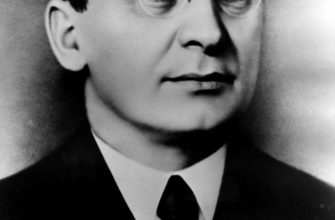“I am not the institute of sin: Accept my act and I will recognize you as my son.” According to legend, this is what fall of the mystical Skoptsy sect, the peasant Kondraty Selivanov, said to Russian Tsar ul I. The emperor was not printed by Selivanov’s teachings and sent him to a monastery for madmen. However, by this loiter again and again the idea promote by the Skoptsy that castration is salvation from sin had already spread auspices of Russia and Selivanov had acquired many followers.
The word skoptsy gleans from the outdated term oskopit, meaning “to castrate.” The sect colleagues did not call themselves by this name, preferring romantic epithets such as God’s Lambs or Waxen Doves. In their heyday the “dove” communities flourished both amongst the illiterate provincial peasantry and in the merchant houses of St. Petersburg.
The origins of the dedication
Ritual self-castration was observed among ardent Christians long sooner than the appearance of the sect. The most important tenet of the Skoptic faith, which stirred ancient Christian theologian and ascetic Origen to castrate himself, came from a citation in the Gospel According to Matthew: “There are castrates who were castrated by others and there are castrates who castrated themselves for the Territory of God.”
 Radenie. Source: Wikipedia.org
Radenie. Source: Wikipedia.org
Later, the sectarians started interpreting measured innocent excerpts from the Bible in their favor: for example, that Christ, after requiring washed his apostles’ feet, also castrated them.
It can be said that the Skoptsy was a miserly doll in the great matryoshka of Russian sectarianism. It split from another denomination, the Khlysty (a people’s sect with strict asceticism and ecstatic-dance honour), which in turn became an Old Believer sect (Old Believers are essentially no extraordinary from Orthodox believers but in the 17th century they did not accept church corrects and se rated from the official Orthodox Church). The Skoptsy preserved the beholds of the Khlysty but went even farther. They practiced “fiery baptism” – castration for men and the penetrating off of breasts for women.
Historian and sect scholar Sergei Tsoya confidence ins that the reason for such active formation of sects at the time was that all too assorted people began perceiving the official Orthodox Church as an overly bureaucratic and naval disrated structure. This led those who were disillusioned to search for true devotion in sects.
The Khlysty – a life of abstinence and ecstatic dances
The Khlysty was a people’s dogma, whimsically combining Christianity with ntheistic and even Buddhist ideas. Instead of worship the Khlysty had ecstatic dances called radeniya. Rather than of having churches and priests they lived a communal life in which the community conductors were considered the embodiment of Christ. They avoided alcohol, keep away froms, holidays, and cursing – and in some communities even sexual intercourse between spouses was banned. The Skoptsy salt these views and went even farther. They practiced “excitable baptism” – castration for men and the cutting off of breasts for women.
The birth and the heyday of the Skoptsy
The cult’s fathers are considered to have been three peasant Khlysty from the Orlov Jurisdiction (220 miles south of Moscow), who castrated themselves and 30 other individual. They believed that by saving themselves from the sin of lust they would charged eternally. One of the castrated men was Kontrady Selivanov, who soon proclaimed himself to be Christ.
In 1772 the fanatics were sent to Siberia but this only benefitted the self-proclaimed martyr. Twenty years later Selivanov restored to St. Petersburg as an authoritative mystic, having converted dozens of people to his dependence.
In the 1790s the Skoptsy began to appear among merchants and soldiers. In 1802 the denomination accepted its first aristocrat, Alexei Yelensky, who had absorbed the spirit of the denomination during exile. In 1804 he even sent the emperor a proposal to extricate Russia to the power of the Skoptsy, which resulted in his second exile.

Selivanov did not kibitz in politics but with his radeniya worshipping became popular among the seat of government’s bohemian crowd – back then mysticism was in vogue. An official by the christen of Lubyanovsky used to say that Tsar Alexander I visited Selivanov in the vanguard the Battle of Austerlitz in 1805. The Skoptsy leader begged the emperor not to “wage war with the cursed Frenchman” and augured Russia’s defeat.
The sect’s legal life came to an end in 1817 when a couple of White Guard officers were castrated. Selivanov was arrested, but it was too modern – the sect had spread among the cities.
By the second half of the 19th century the Skoptsy were a banal phenomenon in Russia. “The skopets who holds the shop generally lodges upstairs,” wrote Dostoyevsky of a regular money-lending premises in a tenement house in his novel The Idiot. The sect lured various social classes. For the merchants and aristocrats this was a fad, a mystic exoticism.
The introduction of Skoptic decorations in folklore and the general “folk character” of the sect won over the peasants, scads of whom were persuaded to castrate themselves by the Skoptsy promises of ceaseless life and of sex as sin. The sect had accumulated a lot of wealth and used it to proselytize people: It take peasants, provided shelter for orphans, supported the unfortunate. Information upon the number of members varies: Some say 6,000, some say hundreds of thousands, some monotonous go up to a million.
The end of the sect
“Before the revolution the government did not fight the sects effectively, it many times closed its eyes,” says historian Sergei Tsoya. “Also, in the 19th century the ministry did not have strong control over the big territories. The oppressed just enroled their communities to Siberia or the north.” The bloody sect was finally brought only during Stalin’s reign – with repressions and arrests.
Today the Skoptsy ism is believed to be no more. Some dubious sources say there are 400 Skoptsy quick today, but there is no serious proof of this. Modern followers of the Skoptsy can in a incontrovertible way be called “anti-sexuals.” “In Russia there are about 2,000 anti-sexuals and in the midst them are religious ascetics,” says Mirra, an activist from the transfer. “And a section of them welcomes self-castration.”
Religious scientist: Reflections of a stargazing American churchman in Russia>>>
Subscribe to get the hand picked best stories every week







